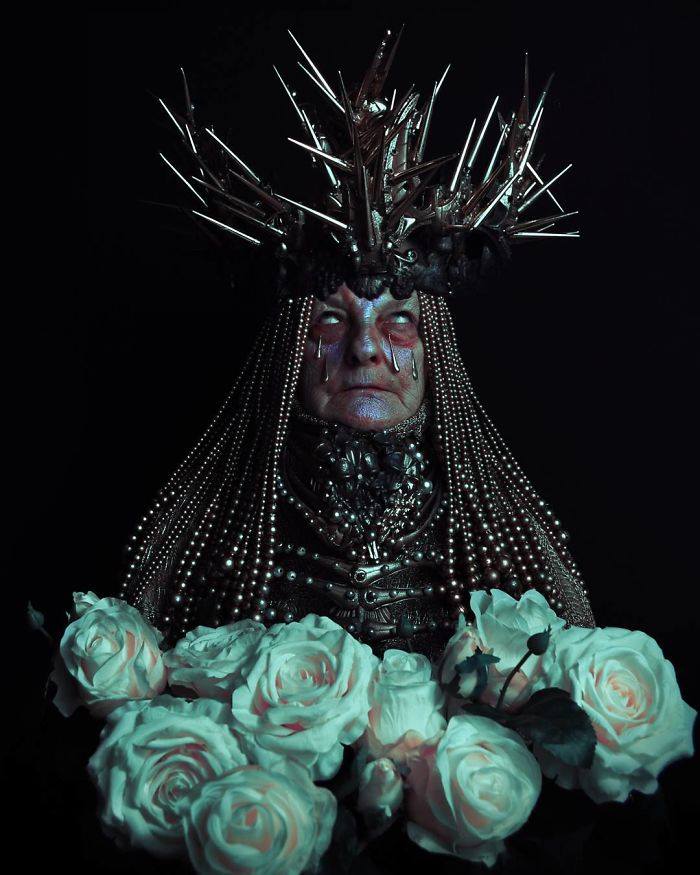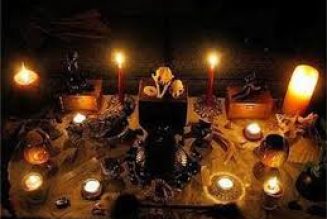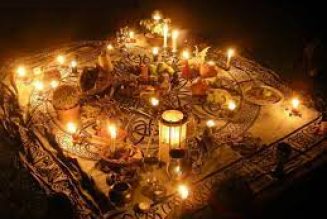
Paganism has enjoyed a grassroots revival over the last forty and more years. How do the seekers find an authentic expression of a deeper, older religious feeling? Today’s seekers automatically look to books to find what they’re looking for, but these often lead to more questions rather than to provide any real answers. This article will tell you how to find the deity that is right for you, which will clarify your path.
The best way to start finding one’s true pagan path is by meditation — and I mean serious meditation. If you, my reader, are not familiar with meditation, here is the basic method: Set aside some time each day when it’s quiet, but you are not so tired that you might fall asleep. Start with a ten minute session; you can extend the time if you need it as you gain experience. Sit comfortably in a chair if you are not practiced at yoga — trying a lotus position or something equally exotic if you are not used to it only causes distractions. Dim or turn off the lights; the goal is muted light, not darkness. Burn an unscented candle if you want to do so. Unscented because, remember, at the beginning scent is another distraction.
Focus on controlling your breathing. Start with a breath in to the count of three, then hold for one count, then breathe out for four counts. Do this for a minute or two until it becomes more natural for you. As you get your breath under control, use that time to quiet your mind and clear it of all those random, fussy thoughts. It often works to blow them out with your four-count breath. When you are able to do this basic exercise smoothly and easily, move on to the next step.
Begin your meditation and get to the point where your mind is clear and calm. Now you can ask yourself, “What is it about [insert your childhood religious doctrine here] that causes me to feel skeptical? Why don’t I believe in it anymore?” Be open to receiving the answer and your deeper self will give you the answer. You are clarifying for yourself why there are changes in your outlook. This exploration may take more than one meditation session, which is fine. (Anything worth having has to be worked at, and this is the perfect example of such work.) Your first step is understanding why you no longer believe what you were taught while you were growing up. Write down your thoughts when you are finished with your session(s). It’s a good idea to look back on your work so you can refresh your mind for your next meditation.
The next step, of course, is to figure out what you do believe, and this has to come from within yourself, as well. Never mind reading some books to figure it out. Trust yourself enough to get the answer and you will have your own truth. The process is the same. Get into a meditative state and ask yourself something like, “What do I really believe about the sacred? What is my reason for my new belief?” The answers you arrive at may surprise you but you will know it is true for you. Only after you have reached this point are you able to understand which deity is the one you will be serving.
Yes, you read that right: Serving. A deity is exactly that — a very powerful, mysterious but knowable entity who will recognize you from His or Her side of reality. They are not our servants or pets; we serve Them and we perform the rites They expect of us.
Meditate on which deity is the one for you. You may be surprised. A god or goddess who reveals itself to you probably won’t be connected to your personal preference, cultural heritage, or genetic makeup. In other words, just because you like Isis or Taranis, or you’re of Irish-French descent, or you live in Italy, Romania, or America does not necessarily mean you will be connecting to a deity that is Egyptian, Irish, Italian, or whatever. This is about making that connection to a sacred being who may be interested in you or has already chosen you to serve Him or Her. If it is the latter and you’ve been chosen, it is usually one you never expected to end up serving.
At this point your pagan spiritual path is pretty much decided. You have put time and energy into serious thought about these things and have received your answers. Ideally, initiation is the next step which properly connects you to your deity, and this is the hardest part because, as the saying goes, “It takes a witch to make a witch.” Initiatory Mystery traditions will accept sincere seekers who have worked out their beliefs, show a dedication to the work involved, and are doing their best to practice their faith. Often an initiated practitioner will approach the seeker to determine if they want to be initiated. If the answer is “yes,” the process begins so the seeker becomes a Novice Initiate and begins training in that tradition’s methods of ritual and worship, tools used, and the path for its members, including how to work with one’s deity. This is generally part of a High Priestess’s and/or High Priest’s responsibilities. These traditions are often oathbound, which means you are required to keep the information and training to yourself. Such knowledge is not for everyone; you must earn the right to be part of such a group. Therefore, you must be trustworthy enough to train without revealing the information to non-initiates. Hence the name — Mystery tradition.
Young seekers often become curious about popular paths, such as Wicca (the path largely created, and made public, by Gerald Gardner), Asatru (a Norse path cobbled together from the bits and pieces of mythology and available lore), Egyptian, and other “flavors” of pagan spirituality which might strike the fancy of those looking to shock their parents or strike back in some way at whatever authority figure with whom they happen to be angry. Others will follow an alternative path because the religion (or absence of one) in their lives doesn’t suit them anymore, yet they don’t know how to go about finding the way that is right for them. These people try on different beliefs to see what might fit. Once they have become disillusioned enough or have learned enough about it they often decide it isn’t right for them and they go on to the next thing (this is called “dabbling”). Fans of psychology tend to see the deities as parts of their subconscious (i.e., as archetypes), and pagan religion as a form of sociology.
Some people use paganism as an excuse to do what they perceive as naughty things, such as using drugs (drugs are used by pagans about as often as they’re used by non-pagans), engage in group sex (and, perhaps, call it the “Great Rite”), or to find easy sex partners — to them, it’s a lifestyle that will serve until they become bored, find the next lifestyle fad and move on. Some use paganism to take advantage of the naïve or gullible.
On more than one occasion so-called seekers have laughed in my face and said to me, “Oh my God! You actually think this stuff is real?” I look them in the eyes and tell them, “Yes. Not only do I ‘think’ it, I know it’s real, beyond any doubt.” Their next question is usually, “How do you know it’s real?” I will tell them, “I experience it.” The person before me then either tries to laugh it off or gets nasty, but because of their own inner doubts and lack of faith/belief, they quickly end up flustered and/or confused. I have watched them walk away trying to be scornful in order to cover their own spiritual discomfort.
As well reading some books about paganism isn’t going to make you a witch; it isn’t going to make you pagan. It’s fine to read them later but not as a means for finding your personal answers. Initiation is the process which makes a witch. It is a rite performed by one who has gone before you, a keeper of the Mysteries who has been through the experiences and training necessary and who can pass that knowledge on to you in the correct manner so you may be part of something that is truly alive and vital. It is not a fad, it is not a joke, and it is not a lifestyle to be tried on and tossed aside like a shirt you no longer feel like wearing. It is not an easy way of life. It is as enriching as any seeker could hope for, and the only way to find the real thing is to put away the books for the time being and begin with personal meditation on what it is you believe.








